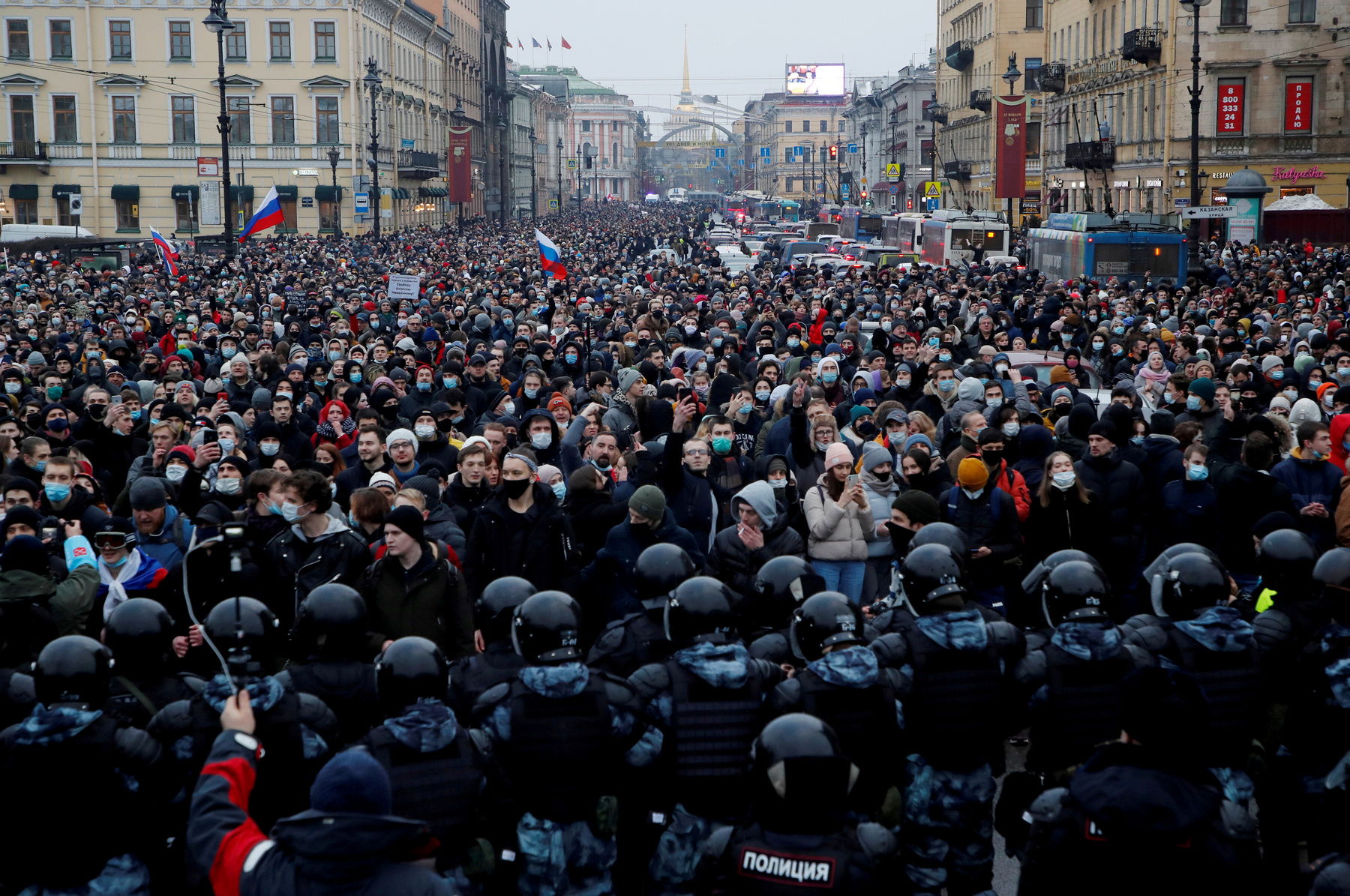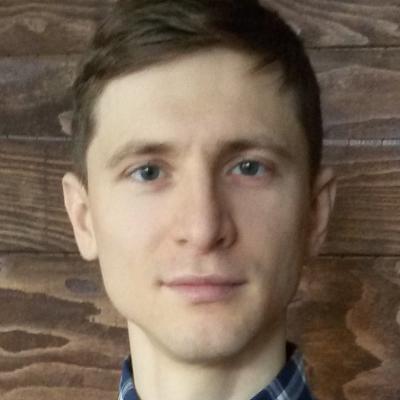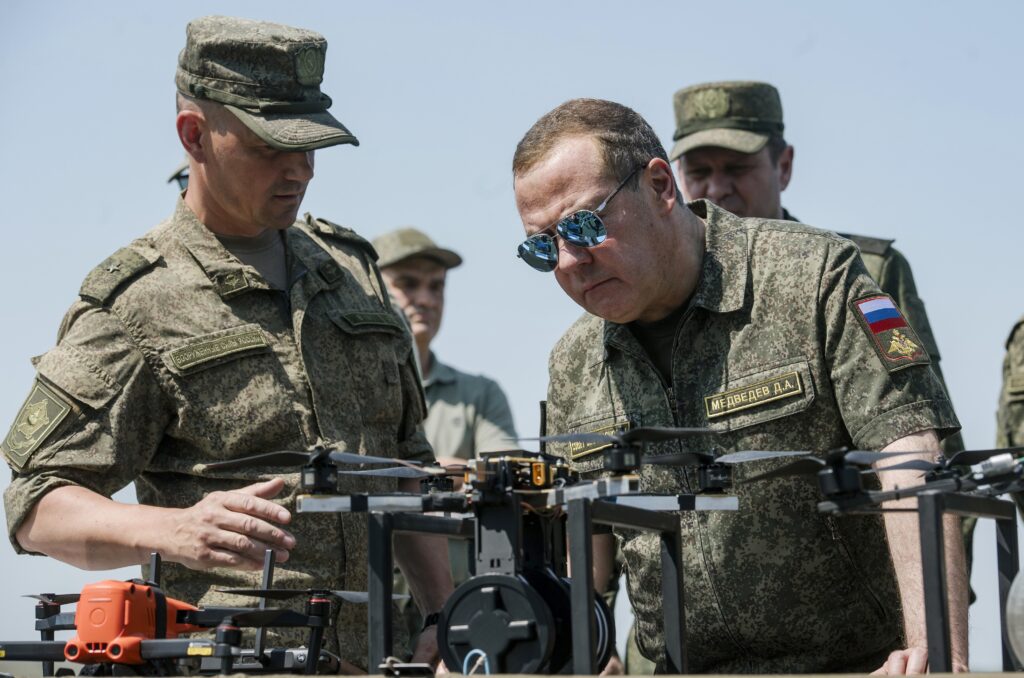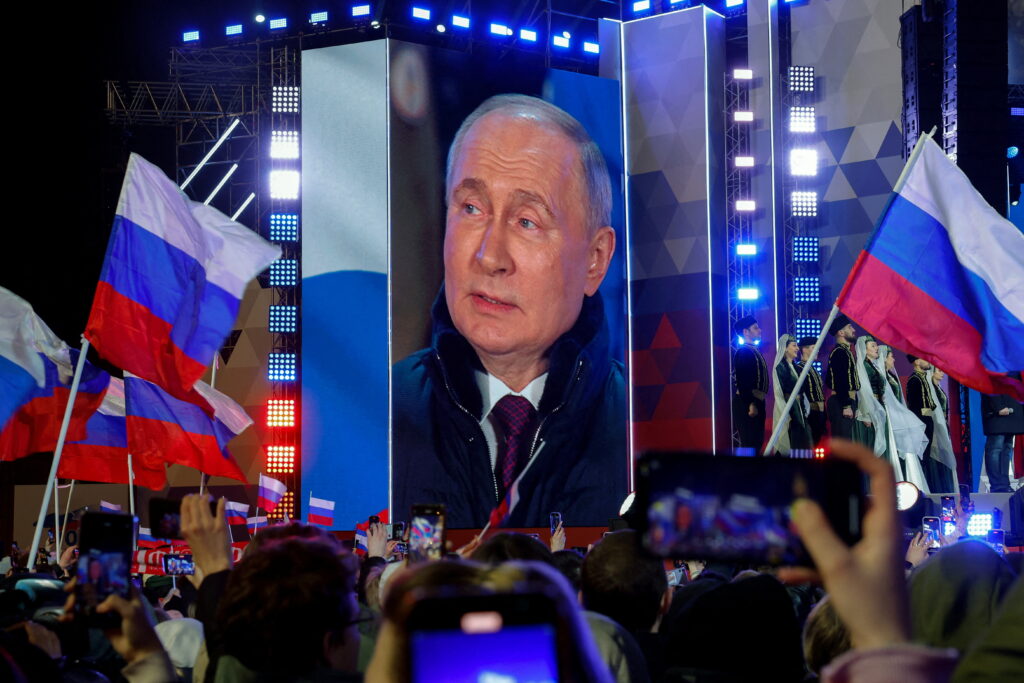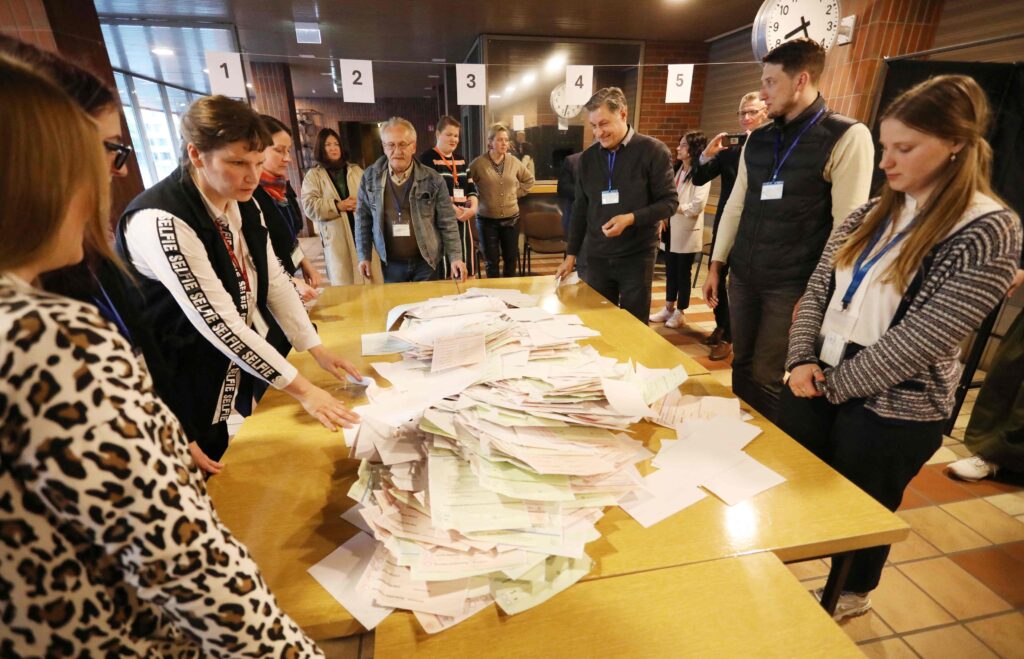The 23 and 31 January rallies in support of Alexei Navalny and against corruption among the Russian elites set another record. These were the largest set of demonstrations by any political opposition since the 2011–2012 campaign ‘For Fair Elections!’
January’s outbursts spanned some two hundred cities. They led to an unprecedented level of detentions and prosecutions. A Levada Center survey suggests that 21% of respondents ‘had closely followed’ these events. 59% ‘had heard something’ about the rallies.
As the Russian governmnet braces for further pro-Navalny protests, it is worth looking closer at the January rallies to gain a deeper sense of the opposition. What was the geographical distribution? Which cities were the most active, and where did most detentions take place? What were the statistical differences between the two waves of protests?
An analysis of the data collected by the Centre for Comparative History and Politics (CCHP) shows that the January protests attracted over 200,000 participants in total — comparable in scale to the largest political campaigns of the last decade. The major regional capitals remained centres of mobilisation despite the significant drop in the number of protesters between the two waves. However, the detentions – while acting as a deterrent – had a limited impact on demobilisation.
A once in a decade moment
The period since Vladimir Putin’s return to the presidency in 2012 can hardly be called peaceful: time after time, Russian citizens have challenged the regime in mass protests, while the regime has escalated repressions. ‘Tightening the screws’ is a standard strategy applied by autocracies not prepared to listen to opposition-minded voters. However, these clampdown have failed to fully quell dissatisfaction with the political situation. There have been several major protest campaigns under slogans that, in one way or another, have undermined the fundamentals of Putin’s political regime.
In the past decade, Russians have regularly expressed their dissatisfaction with the authoritarian regime’s harder line. The 2011–2012 campaign ‘For Fair Elections!’ was the harbinger. The persecution of the regime’s political opponents triggered large-scale protests. In summer 2012, rallies against the conviction of Pussy Riot members spread to many regions; a year later, Russians rallied in support of Navalny, convicted in 2013 in the so-called Yves Rocher case. The murder of Boris Nemtsov in February 2015 resulted in another wave of mass protests.
Navalny’s 2017–2018 presidential campaign also relied on street politics. Protests following the publication of the findings of an Anti-Corruption Foundation investigation in March 2017 peaked in over 160 cities. The 2017–2018 rallies under the slogans ‘He Is Not Dimon To You!’, ‘We Demand Answers!’ and ‘Voters’ Strike’ attracted several hundred thousand protesters altogether. On top of this, a network of regional units was established during the protest campaign. They became the mobilisation network for collective actions, including the January 2021 events.
In 2018, a protest campaign against pension reform was conducted by several actors simultaneously = trade unions, the Communist Party of the Russian Federation and Navalny supporters. The hot summer of 2019 started with May protests in Yekaterinburg against the construction of a church in the park near the Drama Theatre and continued with rallies in support of the Meduza journalist Ivan Golunov and protests against the denial of the right of opposition candidates to run in the Moscow City Duma election. Finally, in 2020, Khabarovsk and Bashkortostan also became hotspots.
Given the above, the January 2021 mobilisation was not exceptional. As with other collective actions with political demands, it came against a backdrop of limited political options and a general distrust of the effectiveness of protests. Only 42 per cent of Russians polled by the Public Opinion Foundation in August 2020 agreed that public action could help solve certain problems. In other words, the January protests took place largely against all odds.
Protests against all odds
Of the three most important ‘ingredients’ of collective action – discontent, available ways to express it, and confidence in the effectiveness of protests – only the first requirement was likely met in January 2021.
Opportunities for collective action in Russia have been consistently narrowed. The situation worsened in the aftermath of pandemic-related restrictive measures. These expanded the grounds for detentions and administrative penalties against protesters. The increase in the number of detentions at single-person protests has been symptomatic. According to OVD-Info, the number of single-person protests has increased dramatically since 2012, not least because they remain the only form of protest available. Other studies (e.g. by Kirill Rogov, OVD-Info and the SOVA Center) also show a clampdown on civil and political freedoms in Russia.
Besides, the Russian authorities did their best to convince potential protesters of the futility of collective action: the rapid trial of Navalny, accompanied by deliberate violations of all procedures, was intended to show that no public pressure would make the authorities change their view of Russia’s main opposition figure or his supporters. Finally, the large-scale raids of Navalny’s offices across the country and the visual ‘muscle flexing’ immediately before the rallies (columns of prison vans and other special-purpose vehicles) signaled that the streets were no place for dissent.
Despite this, the scale of the January mobilisation was impressive. Based on open-source data, we gathered information on 134 cities during the first wave of the protest campaign (23 January) and 99 cities during the second wave (31 January). Taking what appeared to be reliable and comparable data, we counted 160,000 participants in the first wave of protests in 114 cities (with a combined population of about 60 million residents) and 66,000 in 97 cities during the second wave. Besides Moscow and St. Petersburg, it was Perm, Novosibirsk, Krasnodar and Yekaterinburg with the highest numbers of protesters. Kazan, Voronezh, Novosibirsk and Nizhny Novgorod were among the cities with most detainees.

Source: Author’s own estimates based on open-source data
In only 15 of 93 cities with comparable data available did more people turn out for the protest on 31 January than on 23 January (by a combined total of 1,790 protesters). The biggest increase in the number of protesters was in Ulyanovsk (from 200 to more than 1,000 participants). Apart from Moscow, the largest decrease in the number of participants was observed in Krasnodar, Vladivostok, Novosibirsk, Perm and Saratov (a decrease of over 2,000 people). Total protesters remained unchanged in Chelyabinsk and Ufa (out of the top 20 cities for the number of protesters).
There was also a significant drop in the average number of protesters if we compare the 23 January rallies (around 1,200 protesters) with the 31 January protests (nearly 678 protesters). During the second wave, generally only rallies in cities with a population of around or over one million enjoyed a high turnout, although widespread mobilisation also occurred during the first wave in cities such as Belgorod and Syktyvkar with fewer than 400,000 inhabitants.

Source: CCHP

Source: OVD-Info
Was the scale of repressions a determining factor in the later demobilisation? The figure below illustrates the relationship between the number of detentions on 23 January and the change in the number of protesters between the two protest campaigns (Moscow and St. Petersburg are excluded from the comparison). The largest decrease in numbers came in those cities where the most widespread detentions took place during the protests on 23 January. However, this correlation is not absolute and linear: large-scale detentions increased the probability of demobilisation, but clearly did not determine it in a linear way. The policy of intimidation in the form of administrative and criminal prosecutions that followed as well as steps taken to imprison Navalny are likely to have played a key role.

Source: OVD-Info and CCHP
The outcome of the January protests
At first glance, it would appear that the Kremlin has won another tactical victory over the opposition: the mobilisation has come to naught. Navalny is in prison. Hundreds of his supporters are facing administrative and criminal charges and a new wave of repressions, including absurd charges against Navalny’s regional offices such as electricity theft. The 14 February rally, which was meant to maintain the spirit of mobilisation, has been criticised even by those supportive of the opposition. The figure of 500,000 registered for the next rally, announced by Navalny’s chief of staff, Leonid Volkov, has not yet been reached.
But we should not forget that inherently unequal forces are confronting each other. A consolidated authoritarian regime with the power of the state apparatus in its hands versus a network of activists without a formal status or any permanent source of funding. The January protests demonstrated that discontent with the political situation in the country and the willingness to take to the streets have not disappeared. It has so far only been possible to contain the situation by expanding repression.
Mobilisation efforts are still concentrated in large cities, which will play a major role in the forthcoming parliamentary election. In other words, the Kremlin has failed to buy the loyalty of a significant proportion of the urban middle class. The long-term economic problems undermining the ratings of key political figures and institutions have not disappeared either. The streets may be no place for dissenters. But the institutional design of electoral autocracies like Russia still leaves many other options (including the electoral arena) to express one’s views. Taken together, this means the inevitable transformation of street-protest politics, which will assume other forms.
